The 10 factors that impact custom t-shirt cost
Introduction:
In this article, we’ll delve into the key factors that impact custom t-shirt cost.

The 10 factors that impact custom t-shirt cost
Factors That Impact Custom T-Shirt Cost
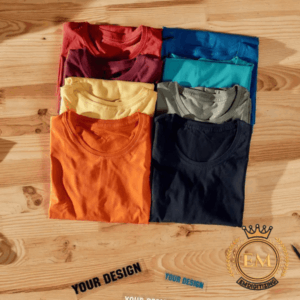
Custom t-shirts have become a popular and versatile way to express personal style, promote businesses, commemorate events, and much more. However, the custom t shirt cost can vary significantly based on a variety of factors. Understanding these factors is essential for individuals and businesses looking to create custom t shirts cost that fit their budget while maintaining quality.
Quantity:
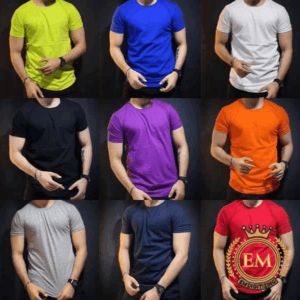
One of the most significant factors affecting custom t-shirt cost is the quantity you order. Generally, the more t-shirts you order, the lower the cost per unit. This is because many of the setup and production costs are spread out over a larger number of shirts. Bulk orders are ideal for events, giveaways, or businesses looking to provide uniforms to their staff.
Design Complexity:
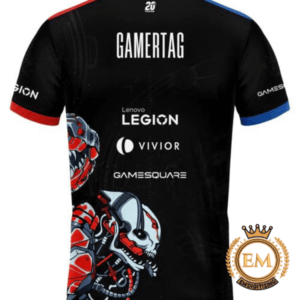
The complexity of your embroidery design plays a role in determining the average price of t shirts. Intricate designs with multiple colors and intricate details may require more time and effort to print, which can result in higher custom t shirt price. Simple and minimalistic designs are often more cost-effective to produce.
Printing Method:

The Luminaire 3 Innov-ís XP3 is designed to handle even the most demanding sewing and embroidery projects. With its lightning-fast stitching speed, you can complete your creations in record time without compromising on quality.
Advanced My Design Center:
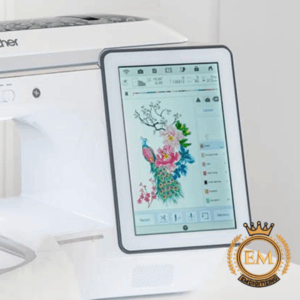
There are various printing methods available for custom t-shirt cost list, each with its own cost implications. Common methods include screen printing, direct-to-garment (DTG) printing, heat transfer, and embroidery. Screen printing is cost-effective for large quantities, while DTG printing is suitable for small orders with intricate designs.
Fabric Quality:

The type and quality of the fabric you choose for your t-shirts can impact the cost. Premium fabrics or blends may cost more than standard cotton. Additionally, the fabric’s weight and texture can affect the printing process, leading to variations in cost.
Color Variations:
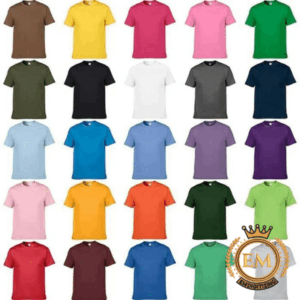
The number of colors in your design affects the cost, as each color requires a separate printing process. Designs with fewer colors are usually more budget-friendly. Some printing methods, like DTG, allow for full-color prints without significantly affecting the cost.
Additional Customizations:
Extras like custom labels, tags, sleeves, pockets, or special packaging can contribute to the overall cost. These added features can enhance the perceived value of your t-shirts but may come with an additional expense.
Order Timelines: Urgent orders or rush production may come with a higher cost due to the need for expedited processing. Planning your orders in advance can help you avoid rush fees.
Supplier and Location:

The choice of your tshirt cost supplier and their location can also influence cost. Local suppliers may offer convenience but could have different pricing structures compared to international suppliers.
Size Range: Offering a wide range of sizes can impact costs, as each size requires a different screen setup. Some suppliers might charge extra for larger sizes.
Markup and Retail Considerations: If you’re planning to sell the custom t-shirt cost, consider factors like your desired profit margin and market competition when determining the retail price. This may affect how much you’re willing to invest in production costs.
Location of Printing: The geographic location where the printing is done can affect costs due to variations in labor, overhead, and production costs in different regions.
Design Placement:

The placement of your design on the t-shirt can influence the complexity of printing. Front, back, sleeves, or all-over prints may require different techniques, affecting pricing.
Bulk Printing vs. On-Demand:
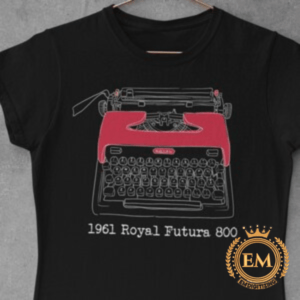
Bulk printing offers cost savings per unit, but on-demand printing allows for small quantities without upfront costs. Choose the approach that aligns with your needs.
Repeat Orders:
If you plan to reorder the same design in the future, some suppliers might offer discounts for repeat embroidery business.
Eco-Friendly Printing:
Opting for eco-friendly printing methods and sustainable materials might have a slightly higher upfront cost but can align with your values and brand identity.
Promotional Bundles
Some suppliers offer bundles that include various items like custom t-shirts cost, hats, and accessories. These packages might offer cost savings compared to ordering items separately.
Online Design Tools:
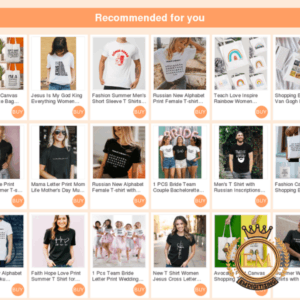
Using online design tools provided by suppliers can streamline the embroidery design process, reducing design costs if you’re not working with a professional designer.
T-Shirt Style and Fit:
Different t-shirt styles, such as regular fit, slim fit, or athletic fit, can affect costs. Additionally, specialized styles like V-neck or raglan sleeves might have different pricing.
Washability and Durability:
Higher quality printing techniques and materials may be more durable and longer-lasting, justifying a higher cost of custom t shirts that maintain their appearance after multiple washes.
Custom Labels and Tags:
Adding custom labels or tags with your brand’s logo can give your t-shirts a unique touch but might add to the overall cost.
Size of Print Area:
The size of the print area can affect the amount of ink used, which can impact costs. Larger designs or all-over prints may require more ink and specialized techniques.
Specialized Printing Techniques:
Methods like discharge printing, which removes the dye from the fabric for a soft print, or water-based inks might have different pricing than traditional methods.
Material Blends and Specialty Fabrics

Choosing specialty fabrics, such as blends with moisture-wicking properties or unique textures, can impact the cost compared to standard cotton.
Collaboration and Communication:
Clear communication with your supplier about your design expectations, budget, and timeline can help ensure the final cost aligns with your needs.
Understanding these factors can help you make well-informed decisions when creating custom t-shirts cost. Keep in mind that each factor plays a role in the final cost, and finding the right balance between quality, design, and budget is key to achieving the best results for your project.
Tips To Consider When Getting Custom T-Shirts Made
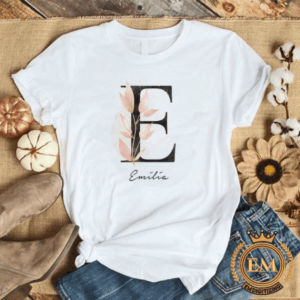
Here are some tips to consider when getting custom t-shirts made:
- Clearly understand the purpose of your custom t-shirts. Are they for a special event, promotional giveaway, or part of your brand’s merchandise? Knowing this will help guide design and quantity decisions.
- Determine how much you’re willing to spend per t-shirt. Consider all costs, including design, printing, and extras like labels or packaging.
- Quality matters. Opt for durable fabrics and printing techniques that ensure your t-shirts maintain their appearance after multiple washes.
- Keep your design clean and simple. Intricate details or too many colors can drive up costs. A clear and impactful design can be just as effective.
- Bulk orders often offer cost savings per unit. However, if you only need a small quantity, explore on-demand printing options.
By keeping these tips in mind, you can navigate the process of creating custom t-shirt cost more effectively, ensuring a successful and cost-efficient outcome for your project.
Conclusion:
In conclusion, the cost of custom t shirts is influenced by a combination of factors including quantity, design complexity, printing method, fabric quality, color variations, additional customizations, order timelines, supplier choice, size range, and retail considerations. Careful consideration of these factors will help you strike the right balance between cost and quality, ensuring that your custom t-shirt project is both financially viable and visually appealing.
We hope you enjoyed reading this article as we did in writing.
If you want to customize embroidery logo digitizing, EM DIGITIZING will be your best choice. At EM DIGITIZING, we deliver the best embroidery logo digitizing services with the best quality. We offer 50% off on all our services to our potential customers on their first order. So, get a free quote now and we will get in touch with you.
Hope this article will be helpful for you guys!
If there’s any question related to this article feel free to comment to us. And, thanks for reading!
The cost of custom T-shirts can vary on factors like quantity, embroidery design complexity, printing method, and fabric quality. On average, basic custom T-shirts can range from $10 to $25 per shirt, while more intricate designs or premium materials may increase the cost.
Yes, selling custom T-shirts can be profitable. By carefully managing production costs, pricing strategy, and targeting the right audience, you can generate a healthy profit margin. Building a strong brand and offering unique designs can also enhance your profitability.
The profit margin on custom T-shirts can vary widely, but a general guideline is to aim for a profit margin of around 50-60%. This means that if a T-shirt costs $10 to produce, you should price it at $20 to $25 to achieve a profitable margin.
The ideal amount of T-shirts to own depends on your needs and preferences. Having a variety of T-shirts for different occasions, styles, and seasons is advisable. A reasonable starting point could be around 10 to 20 T-shirts, which offers versatility without overwhelming your wardrobe.
When pricing your T-shirts, consider factors like production costs, desired profit margin, market competition, and perceived value. A common approach is to calculate total costs (including materials, printing, labor) and then apply a markup that aligns with your profit goals and market positioning.
